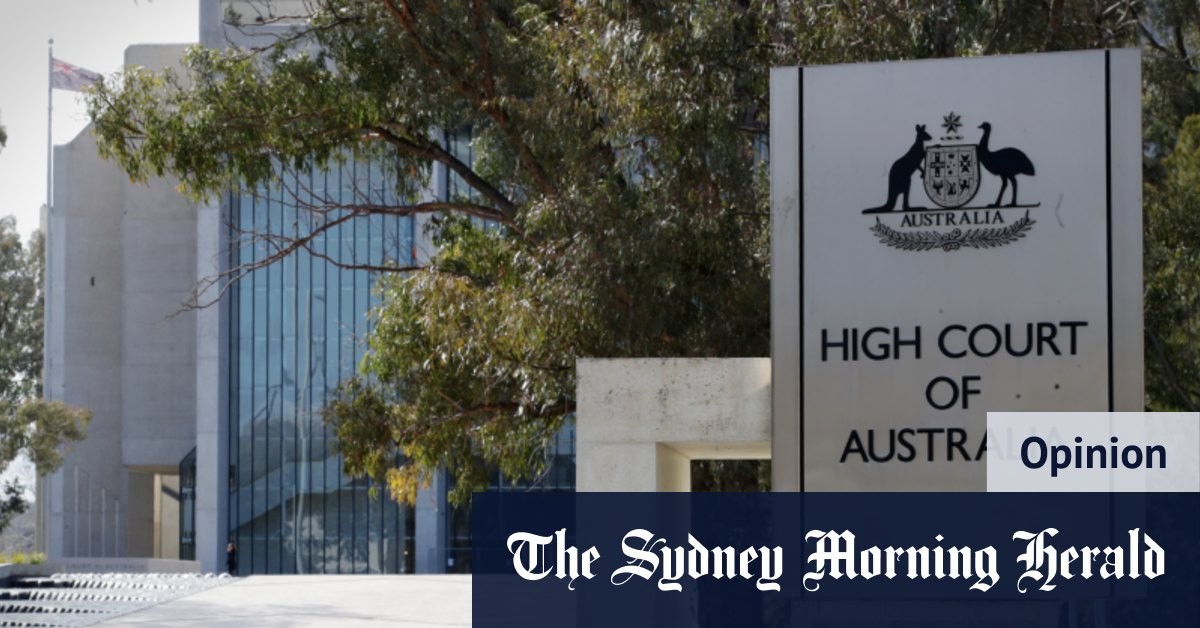Unless you are a lawyer or a law student, you have probably never heard of Pat Keane. The Honorable Justice Keane, AC, to give him his proper title, is the oldest person on the High Court. He reaches the constitutionally mandated retirement age of 70 at the end of October.
Filling Keane’s vacancy will be the first of two appointments the Albanese government will make to the court in this term. The Chief Justice, Susan Kiefel, reaches what judges sarcastically call “the age of statutory senility” in January 2024.

Patrick Keane being sworn into the High Court in 2013.Credit:alex ellinghausen
Attorney-General Mark Dreyfus will be now turning his mind to whom to appoint as Keane’s successor. He will also be giving some long-term thought to who should be the next chief justice.
Unlike the United States, the appointment of members of Australia’s highest court is seldom controversial. That is because, with rare exceptions, attorneys-general from both sides of politics have had the good sense to recommend eminent men and women in whom the public can have complete confidence. On the four occasions that I took recommendations to cabinet for High Court appointments (Justices Nettle, Gordon and Edelman, and Kiefel as chief justice) there was near to universal acceptance of my choices. The only murmur of criticism came from a few on the extreme right, who complained that the appointees were not ideological enough. Which they were not; they were chosen on merit alone. I took the straightforward view that those who sit on the High Court should be the most accomplished lawyers in the land.

Chief Justice Susan Kiefel was nominated by George Brandis.Credit:AAP
The appointment of High Court judges is a process over which the attorney-general usually has almost complete control. It is he or she who decides what name to take to cabinet. Most, if not all, political colleagues will have no idea who the nominee is. They look to the attorney-general as the one person familiar with the senior members of the judiciary and the bar and, basically, trust your judgment. Of course, it is prudent to clear the name with the prime minister first. When Sir William Deane retired in early 1996, Tony Fitzgerald was understood to be the nominee of his fellow Queenslander Michael Lavarch, until Paul Keating (having been lobbied, so it was rumoured, by Neville Wran) blindsided his attorney-general with Michael Kirby.
A recommendation is made after consultation, although there is little but custom to govern who should be consulted. The only formal requirement is s. 6 of the High Court of Australia Act, which requires the Commonwealth Attorney-General to “consult with the attorneys-general of the states” (although not of the territories). That usually consists simply of a letter soliciting their views; predictably, they propose a senior judge or barrister from their own state. When Nicola Roxon was the attorney-general, she extended me, as her shadow de ella, the courtesy of seeking my views; it was a practice which I followed when Dreyfus was my shadow of her.
The most important consultations are with the senior members of the judiciary. This is ultimately at the attorney’s discretion, but by convention the chief justice of the High Court, other members of the court, the heads of the other federal courts and the leaders of the legal professional bodies should be consulted. The attorney-general’s department will also put forward its views.
What surprised me was how self-selecting the shortlist is. While there are many eminent judges and QCs, like any profession, the best of the best are generally acknowledged as such by their peers – their reputations won by decades of practice and the respect their judgments command. The attorney-general also must pay heed to the federal structure: the court should not be too much dominated by a single state. (In the late 20th century, due to the high number of judges from Sydney, Victorian barristers would sarcastically refer to it as the New South Wales Court of Appeal.)
